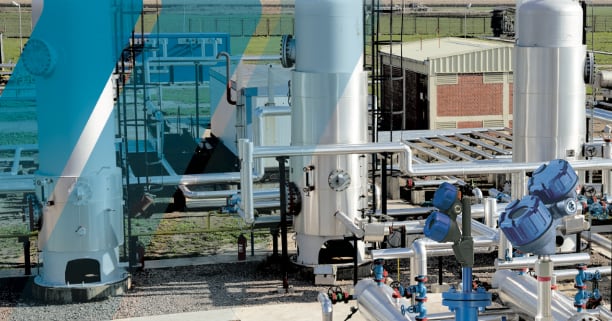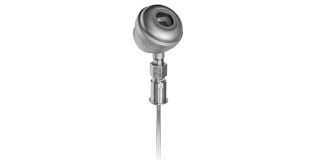Miller Energy, Inc., headquartered in South Plainfield, NJ, stands as a trusted manufacturer’s representative and full-line distributor of industrial process control, instrumentation, and automation solutions. Founded in 1958, the company partners with leading manufacturers to serve customers across New Jersey, New York, Pennsylvania, Ohio, Maryland, Connecticut, West Virginia, and Delaware.
Comprehensive Product Range
Miller Energy delivers a wide selection of quality products across multiple process measurement categories:
- Temperature, Pressure, Level & Flow Instrumentation: From precision transmitters, gauges, thermowells, and switches to high-end guided wave radar level probes and magnetic flow meters.
- Valving & Automation Systems: A full suite of control valves, safety reliefs, and actuated ball, globe, butterfly, and sliding gate valves—supporting sizes from ½″ to 48″ through in‑house automation and testing.
- Analytical & Gas Measurement: On‑line gas analyzers, mass spectrometers (e.g., Thermo Scientific Prima PRO), process photometers, and sanitary refractometers for food, beverage, and pharmaceutical use.
- Data Acquisition, Communications & Wireless: Paperless recorders, PLCs, IIoT-enabled devices, wireless transmitters, and integration-ready solutions.
Technical Highlights
- Guided Wave Radar & Interface Level Measurement: measure difficult liquids, high pressure, foam, or multiple-phase media with SIL‑rated reliability.
- Digital Mass Flow Controllers: offer advanced diagnostics, alarms, and multi-gas capability—ideal for bio-processing and industrial gas systems.
- Sanitary Refractometers: refractometers include 3‑A approved designs for hygienic applications in dairy, juice, brewing, pharma, and more.
- Valve Automation Shop: In‑house assembly of valve/actuator packages. Tests and QA documentation ensure field-ready performance and rapid delivery.
Customer-Centric Expertise & Services
Every interaction starts with engineering questions—not catalogs. Miller Energy’s technical sales team digs into facility-specific challenges—feed chemistry, throughput, failure history—before recommending instrumentation, valves, analyzers, or automation solutions. A New York plant manager might call on them following downtime, while a quality engineer depends on their devices to stabilize product specifications.
The team provides:
- Factory‑trained sales & support engineers per product line
- 24/7 technical help and local stock for immediate shipment
- On‑site startup, commissioning, calibration & training
- Preventive maintenance programs to ensure long-term reliability
Strategic Regional Footprint
With six strategically located offices, Miller Energy supports regional customers with local expertise:
- South Plainfield, NJ (HQ): Covers Northern New Jersey, Metro New York, and Fairfield County, CT.
- Exton, PA: Serves Southern NJ, Eastern PA, Delaware, and Central/Eastern Maryland.
- Pittsburgh, PA: Focuses on Western PA, Western MD, West Virginia.
- Cleveland, OH: Supports Northern Ohio markets.
- New Windsor & Saratoga Springs, NY: Cover Northern and Upstate New York.
Local presence guarantees rapid response times, field expertise, and inventory availability—translating to efficient support and minimized downtime.
Industry Specializations
Miller Energy brings specific domain expertise to a variety of market sectors:
- Water & Wastewater: Magnetic flow meters, guided wave radar, valves and control systems ensuring reliability in municipal and industrial water treatment.
- Food, Beverage & Dairy: Sanitary refractometers and process analyzers meet stringent hygiene and control standards.
- Pharmaceutical & Biotech: Mass flow controllers, sanitary instruments, and sanitary valve automation support cGMP compliance.
- Chemical, Petrochemical & Refining: Pressure safety valves, analyzers, automation packages built to withstand high-risk process conditions.
- Power Generation & Industrial Gas: Boiler controls, flame arresters, VFDs, and safety systems ensure safe and efficient operations.
Value Proposition for Local Customers
- Technical Depth: Engineers with deep knowledge consult, install, calibrate, and troubleshoot—ensuring first-time-right deployments.
- Accelerated Delivery: Multiple stocking locations ensure parts and instruments ship fast—reducing project delays.
- Quality Assurance: Automated valve packages undergo rigorous factory testing. Products meet SIL, 3‑A, and other industry standards.
- Ongoing Support: Preventive maintenance, spare parts, calibration, and training ensure systems continue to perform over their lifecycle.
- Proven Track Record: Customer-first philosophy delivers solutions for plants that reduced downtime, stabilized processes, and controlled spending more effectively.
Conclusion
Miller Energy leverages deep technical know‑how, comprehensive product lines, and localized service capabilities to solve instrument and control challenges across industries. By combining precise equipment with engineering insight and regional presence, the company empowers facilities to run safer, more efficiently, and with greater confidence. Whether a plant manager, maintenance lead, or process engineer seeks responsive support and robust instrumentation—Miller Energy stands as the trusted partner across the Northeast.







